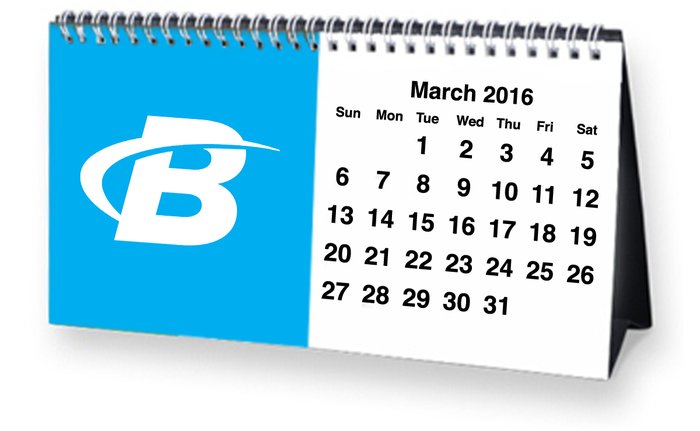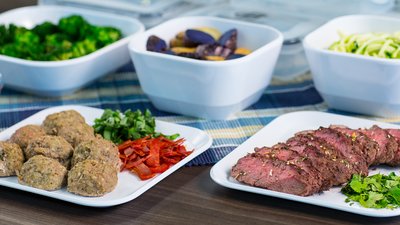The system of eating known as flexible dieting, or "if it fits your macros," has plenty of adherents in gyms and online. In fact, according to some of IIFYM's more diehard supporters, anyone who doesn't follow IIFYM and is doing something more structured—say, with prepared meals or food lists—is somehow doing things wrong.
But the most important question for myself and other coaches and high-level athletes isn't just which system works best while you're dieting; it's also which one will help people maintain their success in the long term. To answer this question, I recently worked with the University of South Florida's Performance and Physique Enhancement lab on a research project.
In order to compare and contrast flexible dieting and meal-plan-based dieting, my fellow colleagues and I designed a study that examined the impact each method had on weight loss efforts, as well as weight maintenance after that diet was over. What I learned may surprise you.
The Study: Meal Plan Vs. IIFYM
Over the course of 20 weeks, we had 27 male and female subjects undergo a two-phase protocol. First, they went through a 10-week dieting period, and afterward, a 10-week reverse diet that was largely unstructured. During the initial 10 weeks, subjects were split into two groups: One group followed a flexible-dieting approach where they had macros but no meal plan, whereas the other group was provided with an individualized meal plan.

To be clear, those first 10 weeks took place in a carefully controlled dieting environment. Subjects were given either specific macronutrient numbers or a specific individualized meal plan. The latter portion of the study, by contrast, was very hands-off. We simply told subjects, "Do what you like" during those weeks, so that we could better understand how each dieting method influences eating behaviors following a period of calorie restriction.
On the front end, we examined body weight, body-fat percentage, pounds of lean and fat mass, and resting metabolic rate (RMR) at baseline. Then, we rechecked each marker at weeks 5, 10 (the end of the diet), 16, and 20 (end of post-diet period).
We also provided a psychological questionnaire that asked questions pertaining to eating behaviors at baseline, the end of the 10-week diet phase, and the 10-week post-diet phase.
What We Found
Throughout the entire dieting period, there were no significant differences between groups on any of the measured variables. Yes, you read that correctly. No difference in fat mass or lean body mass lost. Subjects following the individualized meal plan lost roughly 4 pounds throughout the 10-week diet, and those following the flexible approach lost roughly 6 pounds. The difference was not significant.

During the second phase of the study, the only significant difference was in lean-body-mass accumulation. On average, subjects who completed the dieting phase as part of the flexible-dieting group gained an average of 3 pounds throughout the 10-week post-diet period. Subjects in the meal-plan-based group throughout the initial 10-week dieting phase lost an average of 1 pound during this time.
That's not a lot of weight regained, so I wouldn't interpret it as a big strike against flexible dieting. But the IIFYM dieters certainly didn't leave the meal-plan crowd in the dust.
What I Learned
Although this study represents a small sample size, it lends support to my belief that personal context is key when deciding upon a weight-loss approach. In discussing the study with many participants, I learned that for those who had less experience with nutrition and diet, the structure of a meal plan proved to be invaluable to their success.

@laurinconlin via instagram
It's possible that diving into a flexible approach would have been overwhelming, and ultimately would have worked against both their adherence and their success. On the other hand, those with experience in nutrition, macronutrients, and dieting felt confident executing a flexible approach, and their success showed.
Personally, I follow a flexible-dieting approach, because it allows me greater variety in my diet. This is critical because of my busy travel schedule and day-to-day commitments. Since no foods are off limits, I can incorporate almost anything—within reason, of course—throughout the day when dining out, eating on the go, or shopping for bargain deals at the grocery store.
Does that mean flexible dieting is right for you? Not necessarily. The right diet for you is the one you'll stick to.
References
- Smith, C. F., Williamson, D. A., Bray, G. A., & Ryan, D. H. (1999). Flexible vs. Rigid dieting strategies: relationship with adverse behavioral outcomes. Appetite, 32(3), 295-305.
- Meule, A., Westenhöfer, J., & Kübler, A. (2011). Food cravings mediate the relationship between rigid, but not flexible control of eating behavior and dieting success. Appetite, 57(3), 582-584.



